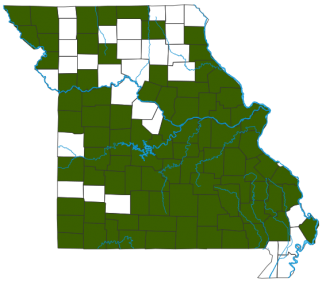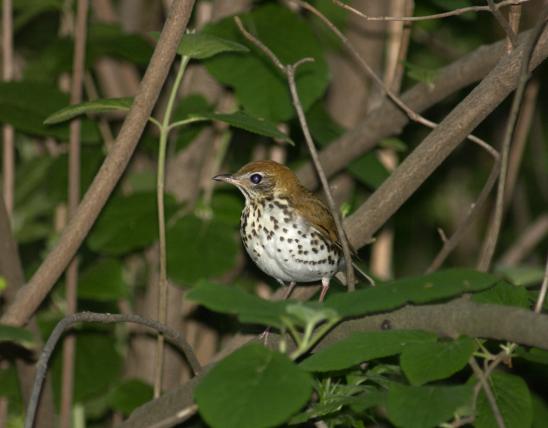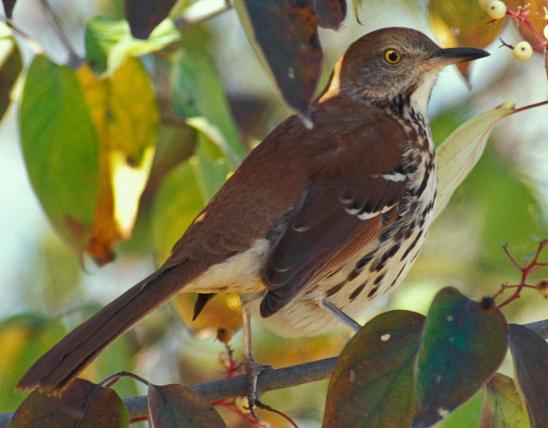Upperparts of the adult Louisiana waterthrush are brown, with a white eyebrow that extends well beyond the eye and flares out slightly on the neck. Underparts are white, with heavy brown streaks on breast and upper belly. Usually the chin and throat lack streaks, which are present in the otherwise similar northern waterthrush. Sides and flanks are buff tinged. Legs are pink. Constantly bobs its tail; usually seen walking on the ground. The loud song rings emphatically with 2–5 clear, down-slurred, whistled notes followed by a jumbled warble. Call is a sharp chink or tsink.
Similar species: The closely related northern waterthrush, mentioned above, has a streaked throat and lacks a buffy tinge on the flanks; its eyebrow is buffy (not white) and does not widen toward the back (if anything, it narrows); its bill is slightly smaller; its legs less pink. Ovenbirds have olive upperparts and a rusty crown stripe bordered with black; there is a bold white eye ring. All three species walk on the ground, rather than hop. Waterthrushes might be mistaken for thrushes or sparrows. Sparrows, however, have conical bills, and any lookalike thrushes (such as wood thrush and hermit thrush) have spotted breasts (not streaked), are larger, lack a pronounced white eyeline, and behave quite differently.
Length: 6 inches.

Statewide.
Habitat and Conservation
Look for this species along streams and rivers but also in swamps; usually in wooded areas. It continually bobs as it walks, sometimes in water, giving it the appearance of an American dipper, the unique underwater-walking bird from the Rocky Mountains.
Food
Walks along the banks of running streams and other bodies of water, pecking among leaves on the ground as it forages for insects, worms, crustaceans, snails, and fish. Occasionally also flits into shrubs or snatches insects from the air.
Status
As a summer resident, common in southern Missouri and uncommon in northern Missouri.
Life Cycle
Present in Missouri from mid-March through early October. Nests on the ground near flowing streams in hilly, wooded areas. Cup nests of mud and a variety of twigs, leaves, and other plant materials are positioned among roots of a fallen tree or other nook near or on the banks of a stream. Clutches comprise 3–6 eggs. Newly hatched young are altricial (helpless and mostly featherless). Winter range includes parts of Mexico, the Caribbean, and northern South America. A Louisiana waterthrush can live to be at least 11 years old.
Human Connections
A memory jogger is called a mnenomic (pronounced neh-MAHN-ik). A great example of this is the way you can connect the song and habitats of our two waterthrushes. The Louisiana waterthrush’s opening notes slur downward, like the sloping lands and flowing streams that this species prefers. But the first notes of a northern waterthrush’s song stay level, like the low wetlands it prefers.
Ecosystem Connections
Waterthrushes are predators that help control the populations of the species they eat. But although many predators might find an adult waterthrush difficult to capture, the carefully hidden nest of this species reminds us that eggs and young are especially vulnerable.
About 350 species of birds are likely to be seen in Missouri, though nearly 400 have been recorded within our borders. Most people know a bird when they see one — it has feathers, wings, and a bill. Birds are warm-blooded, and most species can fly. Many migrate hundreds or thousands of miles. Birds lay hard-shelled eggs (often in a nest), and the parents care for the young. Many communicate with songs and calls.


























